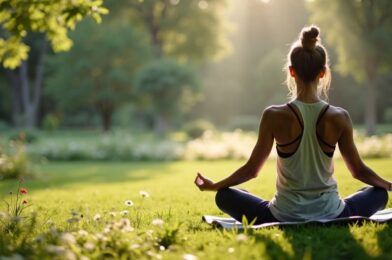Planning an outdoor event can be exciting but also challenging. From choosing the right venue to ensuring the comfort of your guests, there are many things to consider. This guide offers 20 important tips to help you create a successful outdoor gathering that everyone will enjoy.
Key Takeaways
- Select a venue that fits your event’s needs and has necessary facilities.
- Always have a backup plan for bad weather to keep your event running smoothly.
- Check local laws for permits and regulations to avoid legal issues.
- Ensure the safety of guests with proper planning and trained staff.
- Provide amenities like seating and restrooms to enhance guest comfort.
1. Choose The Perfect Venue
Selecting the right venue is crucial for your outdoor event. The venue should match your event’s theme and needs. Here are some key factors to consider:
- Capacity: Ensure the venue can comfortably accommodate your guests.
- Accessibility: Check if the location is easy to reach for everyone.
- Utilities: Make sure there are essential services like restrooms and electricity.
| Factor | Importance |
|---|---|
| Capacity | Enough space for guests |
| Accessibility | Easy for guests to reach |
| Utilities | Essential for comfort |
Choosing the right venue can make or break your event. Take the time to visit potential locations and visualize your setup.
Remember to also consider:
- Shelter Options: Have a backup plan for bad weather.
- Ease of Access: Ensure guests can find and reach the venue easily.
- Local Regulations: Be aware of any rules or permits needed for your event.
By focusing on these aspects, you can ensure a successful outdoor event that everyone will enjoy!
2. Weather Contingency Plans

Planning an outdoor event can be exciting, but it also comes with its own set of challenges, especially when it comes to the weather. Having a solid weather plan is essential to ensure your event goes smoothly, no matter what Mother Nature throws your way.
Key Considerations
- Monitor Weather Forecasts: Keep an eye on the weather predictions leading up to your event. This will help you make informed decisions.
- Backup Shelter: Consider renting tents or canopies to provide shade or protection from rain. This way, your guests will stay comfortable regardless of the weather.
- Communication Strategy: Have a plan in place to inform attendees about any changes due to weather conditions. This could be through social media, text messages, or announcements.
Weather Plan Checklist
| Item | Description |
|---|---|
| Tents/Canopies | Rent enough to cover all guests |
| Weather Insurance | Protect your investment against cancellations |
| Emergency Contacts | List of people to call in case of bad weather |
Always be prepared for unexpected weather changes. A good plan can save your event from being a washout!
By taking these steps, you can ensure that your outdoor event remains enjoyable, rain or shine. Remember, preparation is key!
3. Permit And Legal Considerations
When planning an outdoor event, it’s crucial to understand the permit requirements and legal rules that apply. Here are some key points to consider:
- Local Regulations: Check your city’s ordinances regarding noise levels, especially if your event is near homes. Many places have rules about loud music or activities late at night.
- Food and Alcohol Permits: If you plan to serve food or drinks, you will likely need permits. Make sure all vendors have the necessary food permits, and check if you need a special permit for alcohol.
- Temporary Structures: If you’re using tents or other temporary structures, confirm with your venue about any required permits. Some venues may have strict safety standards or may not allow certain structures at all.
| Permit Type | Description |
|---|---|
| Noise Permit | Required if your event may disturb nearby residents. |
| Food Permit | Needed for any food service, whether free or for sale. |
| Alcohol Permit | Required for serving alcohol; check venue rules. |
| Structure Permit | Needed for tents or large setups; check safety regulations. |
| Mass-Gathering Permit | Required for large events with many attendees. |
Always ensure you have the right permits to avoid any legal issues. Not having the proper permits can lead to fines or even event cancellation.
By being aware of these legal considerations, you can help ensure your event runs smoothly and successfully!
4. Safety First

When planning an outdoor event, safety should be your top priority. Here are some essential steps to ensure a safe environment for everyone:
Key Contacts
- Make sure all staff and volunteers know who to contact in case of an emergency.
- Provide a list of important phone numbers, including local emergency services.
Medical Services
- Have a first-aid kit available for minor injuries.
- For larger events, consider setting up a medical tent with trained personnel.
Day-of Communication
- Use walkie-talkies or a group messaging app to keep everyone informed during the event.
- Ensure that all vendors and staff are aware of emergency procedures.
Security Measures
- Plan for security personnel to manage crowd control and handle any issues.
- Establish a clear protocol for dealing with emergencies, including evacuation routes.
Accessibility
- Ensure that your event is accessible to everyone, including those with disabilities.
- Provide designated parking and clear pathways for easy navigation.
Weather Preparedness
- Be ready for heatwaves by providing plenty of water and shaded areas. Take plenty of water and encourage breaks in the shade to keep everyone cool.
By following these guidelines, you can create a safe and enjoyable experience for all attendees.
5. Comfort And Amenities
Creating a pleasant atmosphere for your guests is essential for any outdoor event. Comfortable seating and clean facilities can make a big difference. Here are some key points to consider:
Seating Arrangements
- Provide enough seating for all guests.
- Consider options like picnic tables, chairs, and even lounge areas.
- Ensure seating is shaded or covered to protect from the sun.
Restroom Facilities
- Make sure there are enough restrooms available. A good rule is one restroom for every 50 guests.
- Rent portable toilets if the venue lacks proper facilities.
- Ensure they are well-ventilated and located close to the main event area.
Water Stations
- Set up multiple drinking water stations throughout the venue.
- Consider providing water bottles or hydration stations to keep guests refreshed.
- Having a steady supply of drinking water is crucial.
Additional Amenities
- Think about renting cooling stations or fans to help guests beat the heat.
- Provide trash and recycling bins to keep the area clean.
- Consider offering shade structures like tents or umbrellas.
Remember, the more comfortable your guests feel, the more they will enjoy the event!
6. Sound And Lighting
When planning an outdoor event, good sound and lighting are essential for creating a great atmosphere. Here are some key points to consider:
Key Considerations:
- Hire Professionals: Collaborate with audio and lighting experts to ensure high-quality equipment and setup.
- Energy-Efficient Options: Use LED lights for better visibility and lower energy consumption.
- Backup Power: Always have a backup power source ready in case of outages.
Equipment Checklist:
| Equipment Type | Purpose |
|---|---|
| Speakers | For music and announcements |
| Microphones | For speeches and performances |
| Lighting Fixtures | To illuminate the venue |
| Extension Cords | To connect equipment |
| Backup Generator | To ensure power supply |
Make sure to test all equipment before the event to avoid any last-minute issues. If your outdoor venue lacks access to electricity, consider battery-operated or solar-powered lights to keep your event shining bright. With the right planning, you can create a memorable experience for your guests!
7. Food And Beverage Options

When planning an outdoor event, offering a variety of food and drink options is essential to keep your guests happy. Here are some key points to consider:
- Diverse Menu: Include options for different dietary needs, such as vegetarian, vegan, and gluten-free.
- Local Vendors: Partner with local food trucks or caterers to bring unique flavors to your event.
- Beverage Choices: Provide a range of drinks, from water and soft drinks to alcoholic options like craft beers and cocktails.
| Food Type | Example Options |
|---|---|
| Appetizers | Mini sliders, veggie platters |
| Main Courses | BBQ, tacos, pasta dishes |
| Desserts | Cupcakes, fruit skewers |
Make sure to have enough refreshments available, especially on hot days. Guests should never feel thirsty or hungry during your event!
8. Entertainment And Games
When planning an outdoor event, entertainment is key to keeping your guests engaged and happy. Here are some fun ideas to consider:
Ideas for Entertainment
- Live Music: Hire local bands or musicians to create a lively atmosphere.
- Interactive Games: Set up games like sack races or tug-of-war to encourage participation.
- Photo Booths: Provide props and backdrops for guests to take fun pictures.
Benefits of Entertainment
| Type of Entertainment | Benefits |
|---|---|
| Live Performances | Creates a vibrant atmosphere |
| Games | Encourages guest interaction |
| Photo Booths | Provides memorable keepsakes |
Engaging activities not only entertain but also help in building connections among guests.
By incorporating these elements, you can ensure that your outdoor event is memorable and enjoyable for everyone!
9. Communication And Marketing
Want to spread the word about your outdoor event? Here are some key strategies:
- Develop a strong marketing plan: Create a detailed plan that outlines how you will promote your event. This should include social media, email newsletters, and event websites.
- Use social media effectively: Share images, videos, and graphics that capture the spirit of your event. Highlight what makes your event special to draw in attendees.
- Engage with your audience: Respond to comments and questions on your social media posts. This helps build excitement and keeps potential attendees informed.
| Platform | Purpose | Best Practices |
|---|---|---|
| Event promotion | Create an event page, share updates | |
| Visual storytelling | Post engaging photos and stories | |
| Direct communication | Send reminders and important details |
Remember, effective communication is key to a successful event. By using various channels, you can reach a wider audience and ensure everyone knows about your outdoor gathering!
10. Eco-Friendly And Sustainable Strategies

Planning an outdoor event can be a great opportunity to promote sustainability. Here are some strategies to make your event more eco-friendly:
Use Recyclable Materials
- Choose recyclable or compostable items for plates, cups, and utensils.
- Avoid single-use plastics whenever possible.
- Provide clearly marked recycling bins throughout the venue.
Encourage Sustainable Transportation
- Promote carpooling or the use of public transport to reduce carbon footprints.
- Offer incentives for attendees who arrive using eco-friendly methods.
- Consider providing shuttle services from key locations.
Minimize Waste
- Plan for waste management by having a clear strategy for recycling and composting.
- Educate attendees about your commitment to the environment and encourage them to make conscious choices.
- Use digital tickets and programs to reduce paper waste.
By incorporating these eco-friendly practices, you not only help the environment but also inspire others to think about their impact on the planet.
Implementing these strategies can make your outdoor event not just enjoyable but also a step towards a more sustainable future!
Final Thoughts on Planning Your Outdoor Event
Planning an outdoor event can seem tough, but with the right steps, it can be a lot of fun! Remember to think about the venue, weather, and permits. Make sure your guests are safe and comfortable by providing enough seating, food, and restrooms. Don’t forget to have a backup plan in case things don’t go as expected. By following these tips, you can create a memorable experience for everyone. So get ready to enjoy the great outdoors and make your event a success!
Frequently Asked Questions
What should I consider when choosing a venue for my outdoor event?
Look for a place that fits your event’s theme, has enough space for guests, and offers good facilities like restrooms and power.
How can I prepare for unexpected weather during my outdoor event?
Always have a backup plan, like tents or umbrellas, and check the weather forecast regularly.
What permits do I need for an outdoor event?
You may need permits for noise, alcohol, and crowd size. Check with local authorities to be sure.
What safety measures should I take for my event?
Make sure to have first aid kits, emergency plans, and trained staff on site to handle any issues.
How can I make my guests comfortable at an outdoor event?
Provide seating, shade, water stations, and restrooms to ensure everyone has a pleasant experience.
What kind of sound and lighting do I need for an outdoor event?
Invest in good quality sound and lighting systems, and consider hiring professionals for setup.
What food options should I offer at my outdoor event?
Choose easy-to-eat foods and drinks that cater to different diets. Local food trucks can be a great option.
How can I promote my outdoor event effectively?
Use social media, email newsletters, and event websites to reach a wider audience and share what makes your event special.















